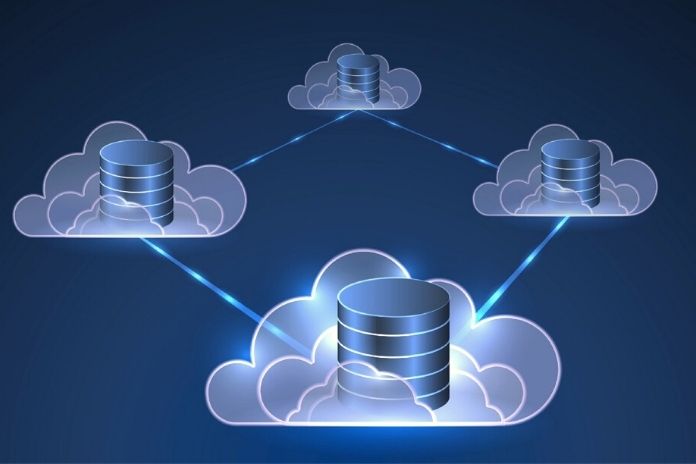Cloud databases will change developer practices. Thanks to the evolution of technologies, developers can now implement their applications on more specialized databases. We are moving from historical relational databases to new databases, which lend themselves more to use cases such as graphs or time-series data.
Organizations should soon take more and more interest in so-called No SQL databases to cope with the explosion in data volumes. Many of these new projects will be based on cloud databases (DBaaS or Database-as-a-service), facilitating deployment and management. To determine the most suitable platform, some expertise in cloud and data management will always be necessary to understand the constraints (latency, scalability, resilience, costs).
Securing And Operating Databases Will Continue To Raise Problems
An upsurge in production incidents due to poor configurations (security, deployment) was observed. Unless industry players facilitate the adoption of solutions designed to be more robust or all unsecured deployments are identified (laughter), this phenomenon will not run out of steam in 2021.
To remedy this, database editors and cloud providers who offer a managed service will have to put reasonable security practices and meet all the conditions to impose their implementation. We must capitalize on the expertise around databases to build better services – whether through the products themselves or their cloud version.
The Generalization Of Graph Databases Is Announced
Graph-oriented databases have made great strides lately. Knowledge graphs (e.g., UDF) and property diagrams make modeling and analyzing relationships between different objects easier. As an increasing number of organizations work to identify the existing relationships between objects, geographic locations, and individuals, graph databases are expected to gain in popularity.
The growth of the graph in 2021 could, however, be slowed down by the lack of understanding that surrounds this technology. This is explained by the scarcity of profiles with the specific skills required. As new solutions emerge to market, they should make it easier to adopt, but those who do take the plunge can find it challenging to start configuring the data correctly. For the adoption of the graph to be successful, it is therefore essential to approach the problems by prioritizing the relations between objects.
The Multi-Cloud Goes From A Strategic Objective To A Concrete Reality
Last year, CIOs made multi-cloud their priority, a sign of their desire to keep control of their company’s IT strategy when it began to use public cloud services. However, many of these projects spawned standalone applications unable to run on different cloud deployments.
In some cases, the possibility of seeing specific projects run on the public cloud and others on existing On-Premise infrastructures will be enough to be able to boast of “doing multi-cloud.” For most CIOs, this evolution is a springboard towards materializing projects based on a hybrid cloud or multi-cloud infrastructure.
Running strategically important applications on multiple cloud services independently and at scale presents its share of challenges that will finally be overcome in 2021. Along with this progress will be a better understanding of the concept of multi-cloud and its implications for data, the everyday and complimentary use of specific cloud services, and database architectures designed for multiple types of cloud.
The Effects Of Moving To Containers Are Starting To Be Felt In Data Management Practices
Databases tend to adapt to the design of applications a year or two behind schedule, which means that the spread of containers and microservices will start to be felt on the architecture choices of the databases that will see the day in 2021. It must be said that a growing number of microservices are now in the production phase and that the architecture must evolve to allow their full development.
In 2021, developers will have to get closer to their operational teams around topics such as availability, resilience, and securing data produced by microservices. For this work to be successful, they will have to integrate these constraints from the start, which involves the choice of the type of database and the data replication strategy.
Kubernetes (k8s) Will Cause Some Disappointment
In recent years, the Kubernetes project has been on everyone’s lips and sold out at various Meetups worldwide. In 2021, with feedback from real deployments, however, it should lose its splendor. We can see the characteristic life cycle of these projects and the announcement of a future full of promise.
So we can expect his design errors to be the focus of conversation next year. New projects will also try to take their place, erasing the weaknesses of the original model. Some people are already expressing skepticism about choosing Kubernetes in the first place. In general, operations teams considering adopting k8s for large deployments will exercise increased caution when evaluating the advantages and disadvantages of this technology.
The Arrival Of 5G Will Lead To An Explosion In Data Volumes
5G is still in its infancy. Launches have taken place here and there, and we are already seeing some outstanding marketing campaigns that praise consumers. However, it will be necessary to wait until 2021 to observe the rise of the first deployments and their adoption by companies.
For companies that want to capitalize on 5G is a significant promise. These new data sources should help them to consider more prosperous use cases. For example, extracting more data from each device and querying it regularly will allow logistics companies to gain a more accurate insight into its performance.
Note, however, that this will lead to an explosion in the volumes of data to be backed up and managed. Therefore, they will need to strengthen the capacities of their applications and their databases to absorb this torrent of data. The cost of the operation will impact the design choices of the services intended for connected objects.
Also Read: Data Analysis, What It Is And How It Is Implemented

